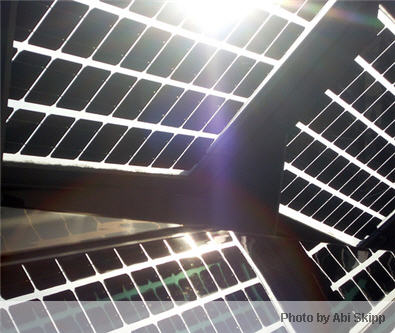
Silver miners will be challenged to keep pace with demand for the precious metal over the next decade, with new uses for silver and strong investment demand keeping upward pressure on prices, according to a report by Fortis Bank Nederland/VM Group.
The June 2010 edition of The Silver Book says that new uses for the white metal – including solar and medical applications, radio frequency identification (RFID) tags, food hygiene and water purification – will quadruple in the next 10 years, to 25 percent of world silver demand from 8 percent today.
At the same time, the supply of mined silver is projected to run at a compound annual growth rate of just 2.4 percent over the next decade, according to VM Group.
The resulting market imbalance will continue to put upward pressure on prices.
“Despite projected growth by inproduct and co-product output, we doubt that it will meet the growth in demand,” the report concludes. “Silver’s mid and long-term prospects are therefore more convincingly bullish than they have been for quite some time.”
Indeed, the impressive run on silver in the latter half of 2010 may be emblematic of a longer-term trend. In one month the metal bounced from $17.50 an ounce to almost $25.50 – levels not seen since the 1980s.
Precious metals commentator David Levenstein notes that the price is being driven by surging investment demand as investors shy away from paper assets and turn to commodities.
“The increase in demand for silver can be seen in the increased holdings of the silver exchange traded funds (ETFs) and silver bullion bars and coins. Holdings in silver ETFs increased by more than 1,500 tons in the past two months alone,” Levenstein wrote in late 2010. “That is more than 5 per cent of total annual silver supplies. Sales of silver bullion coins are set to make record sales this year.”
Another interesting supply side trend is the decline in Chinese silver exports.
According to Bloomberg, silver exports from China, the world’s third largest silver producer behind Peru and Mexico, were expected to drop 40 percent in 2010 because of climbing domestic demand for the metal.
Says Levenstein: “This means that the amount of silver coming to the global marketplace (in 2010) will drop by more than 70 million ounces. This represents roughly 8 percent of total annual global supply from 2009.
”Although these supply changes may buttress the upward pressure on the price of silver, the real changes are occurring on the industrial demand side, according to The Silver Book.
The book notes that industrial demand for silver has been trailing since 2006, mostly because less silver has been used in photography since the advent of digital cameras. The Silver Institute concurs that silver-based imaging has been steadily dropping for a decade.
The most important of these is the solar energy sector, which uses silver in solar cells (photovoltaics) and reflective mirrors used to concentrate solar power.
The VM Group forecasts the compound annual growth rate of silver, for use in solar power, to rise by 17.5 percent annually over the next decade. This will require about 70 million ounces of silver per year by 2020.
The group’s numbers are conservative compared to those of the International Energy Agency, which predicts a need for 85 million ounces of silver a year between 2010 and 2050 for photovoltaics alone.
The higher demand is also being driven by government polices calling for more renewable energy, Kitco News reported in November, citing research firm GFMS. The firm notes that Europe is pushing to double the percentage of renewable energy consumed, from 10 percent of total energy consumption in 2008, to 20 percent in 2020.
The VM Group says that the medical and textiles fields will play an increasingly important role in determining the market for silver, with medical offtake – silver used to inhibit bacterial growth – leaping nine times from current levels by 2020, to 22 million ounces a year.
Another key new area of growth is radio frequency identification tags (RFIDs). Similar to bar codes but with more sophisticated scanning ability, RFIDs contain about 11 milligrams of silver each and are difficult to recycle.
The Silver Book describes RFIDs as “one of the biggest technological changes after the Internet,” and notes that China is spending $6 billion on “a massive program which uses these tags not only in ID cards for all Chinese citizens but also for annually issuing billions of transport tickets.”
The tags can also be used in supplychain management for tracking retail goods, an area where robust growth is expected. The Silver Book estimates the number of RFIDs will balloon by a factor of six between now and 2020, from 6.5 billion to 36 billlion. If those predictions prove correct, it would mean a six-fold increase in silver consumption, from 2.1 million to 12 million ounces.
Links and Reference